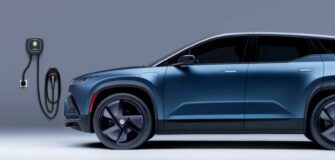GM’s Bold Move Back to Plug-In Hybrids – What’s Behind the Decision?

The automotive industry is at a pivotal juncture, with sustainability driving innovation and reshaping industry strategies. General Motors (GM), a titan in the American automotive landscape, recently made waves by announcing its return to plug-in hybrid (PHEV) technology after a period focused exclusively on battery electric vehicles (BEVs).
Adapting to Shifting Realities
GM’s resurgence in the plug-in hybrid arena marks a strategic pivot in response to evolving market dynamics. While the company remains committed to achieving zero tailpipe emissions by 2035, sluggish EV sales prompted a reevaluation of its approach. The reintroduction of PHEVs underscores GM’s agility in navigating the transition to electrification while catering to diverse consumer needs.
GM’s Electric Legacy
GM’s engagement with electric mobility traces back decades, reflecting a blend of innovation and adaptation. From the pioneering Electrovair in the 1960s to the trailblazing EV1 in the 1990s, the company has consistently pushed boundaries in electric vehicle development. The Chevrolet Volt, introduced in 2010, further cemented GM’s commitment to electrification, heralding a new era of plug-in hybrid technology.
The Volt’s Impact
The Chevrolet Volt emerged as a game-changer, bridging the gap between electric and gasoline-powered vehicles. As the world’s first commercially available extended-range electric vehicle (EREV), the Volt showcased the viability of plug-in hybrid technology. Its innovative design alleviated range anxiety, offering consumers the best of both worlds: electric efficiency for daily commutes and gasoline backup for longer trips.
 GM’s Electrification Roadmap
GM’s Electrification Roadmap
GM’s electrification journey gained momentum with the unveiling of the Ultium platform in 2021, a versatile architecture poised to underpin a diverse range of electric vehicles. Initial releases like the Chevrolet Bolt EV and Cadillac Lyriq demonstrated GM’s commitment to electrification. However, sluggish EV sales and regulatory pressures prompted a strategic recalibration, leading to the reintroduction of plug-in hybrids.
Compliance vs. Consumer Demand
GM’s decision to reintroduce PHEVs reflects a nuanced understanding of regulatory mandates and consumer preferences. While PHEVs offer a middle ground between electric and gasoline power, enabling compliance with emission standards, they also cater to consumers wary of fully committing to EVs. By embracing PHEVs alongside BEVs, GM seeks to strike a balance between regulatory compliance and consumer choice.
A Convergence of Technologies
As GM embarks on its hybrid resurgence, the automotive landscape stands poised for transformation. The convergence of electric and hybrid technologies heralds a future of sustainable mobility, driven by innovation and environmental stewardship. By embracing hybrid solutions, GM reaffirms its commitment to shaping the future of transportation while meeting the evolving needs of consumers.
In conclusion, GM’s return to the plug-in hybrid fold signifies a strategic adaptation to evolving market dynamics and regulatory pressures. By embracing a diverse portfolio of electric and hybrid offerings, GM charts a course toward sustainable mobility, ensuring a greener and more accessible future for all.









